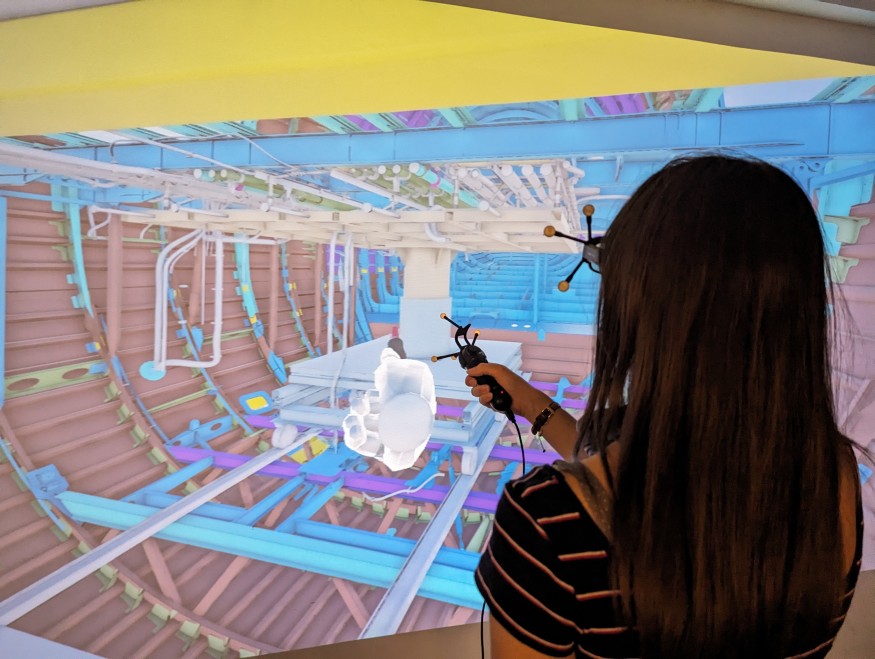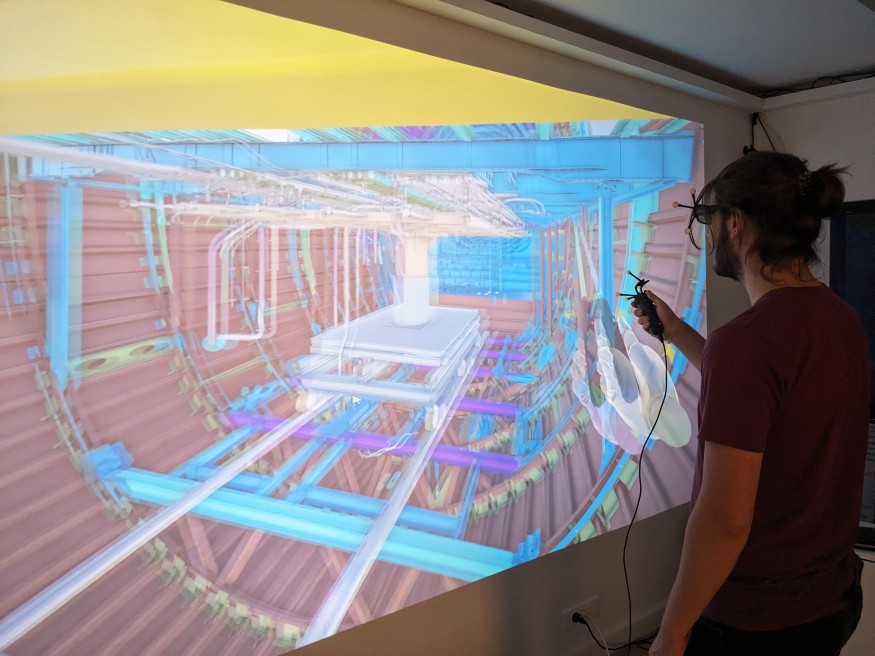A VR CAVE (Cave Automatic Virtual Environment) is a VR space or cube like room, with 3D images projected onto the walls of the room, to create a walk-in immersive 3D environment. The options of a VR CAVE are numerous, such as projectors, tracking, number of screens, size of screens, resolutions and it is highly likely that no two CAVEs are alike. The TORE project led by the UMR SCALab laboratory, under the supervision of the University of Lille and the CNRS, reflects these options, as shown in the video below.
The VR CAVE, a highly immersive virtual environment
A CAVE (also called Computer Automatic Virtual Environment) is composed of a minimum of 2 walls but can go up to 6 sides of the cube when adding a floor and a ceiling to all 4 walls. These walls act as a projection screens onto which the 3D graphics are projected. Typically these screens use 3D stereoscopic rear projection, to recreate a 3D immersion virtual environment, using multiple projectors of up to 4k resolution to ensure a very high quality image.
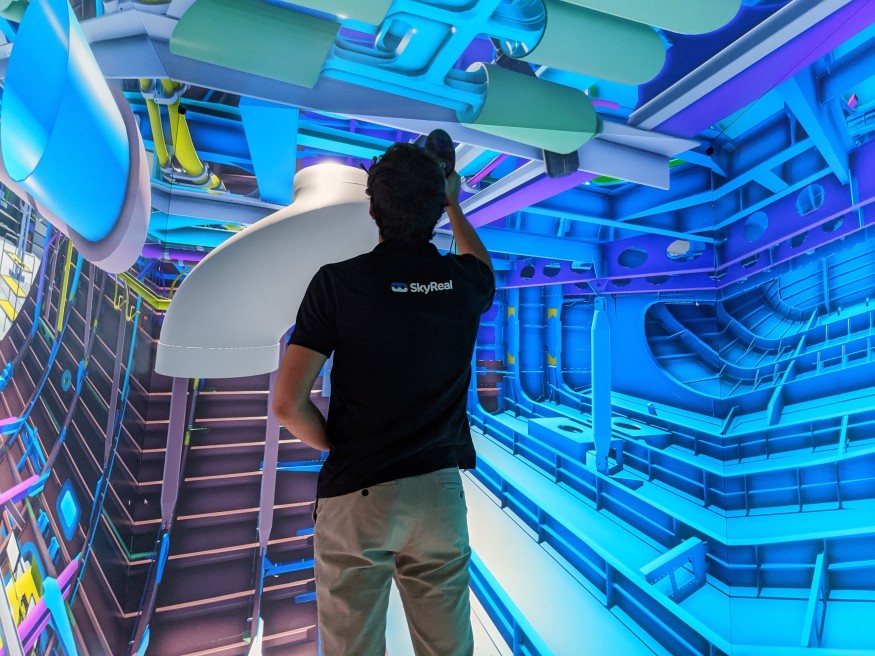
Depending on the setup of the CAVE, the projection can also be done from below, from above or by mirror effect to reduce the amount of space needed. Recent installations have also seen the walls replaced by 3D LED screens (CAVE2).
The user’s head and hands movements in the CAVE space are tracked in order to synchronize them with the point of view of the 3D immersives images, projected on the screens. Thus as the user moves around inside the CAVE the 3D images update to give them a new view of the virtual world. As well as head and hands, the CAVE offers the possibility of full body tracking, ideal for a full virtual reality experience.
In order for the VR CAVE to function optimally, it is necessary to have a network of computers driving the projectors to be perfectly synchronized with each other in order to process the images and obtain a combined visual rendering across all the screens.
Why use a VR CAVE ?
More and more companies are looking at a CAVE system VR when they want to be able to bring several people into a single virtual experience. The ability to have up to 10 people all watching the same image, with one person acting as leader or guide through the virtual experience makes it a great VR solution for a group, especially in a presentation type scenario. As well as having people in front of the screen, several remotely located CAVE virtual reality systems can be connected together to provide a collaborative experience, even adding in remote users with Head Mounted Displays (HMDs) as avatars on the screen.
The CAVE setup has the advantage over a HMD solution in that all the viewers can see the 3D images, whilst wearing 3D glasses, so can be fully immersed, rather than watching a on a 2D screen whilst one person is using a HMD. Another element of a VR CAVE setup is the possibility to go further by enhancing the virtual environment with real-world input devices to increase the 3D immersion effect by having tactile interactions. Devices such as a haptic arm can be added for learning gestures, accessibility control or ergonomics studies, or a physical control panel that moves objects within the virtual scene.
For an operator it is possible to test working positions in the VR CAVE and then adapt the surrounding 3D objects to his movements. Thus, it is possible to improve his work environment and highlight any MSD issues (Musculoskeletal Disorders) problems for the operator especially when tracking the full movements of his body.
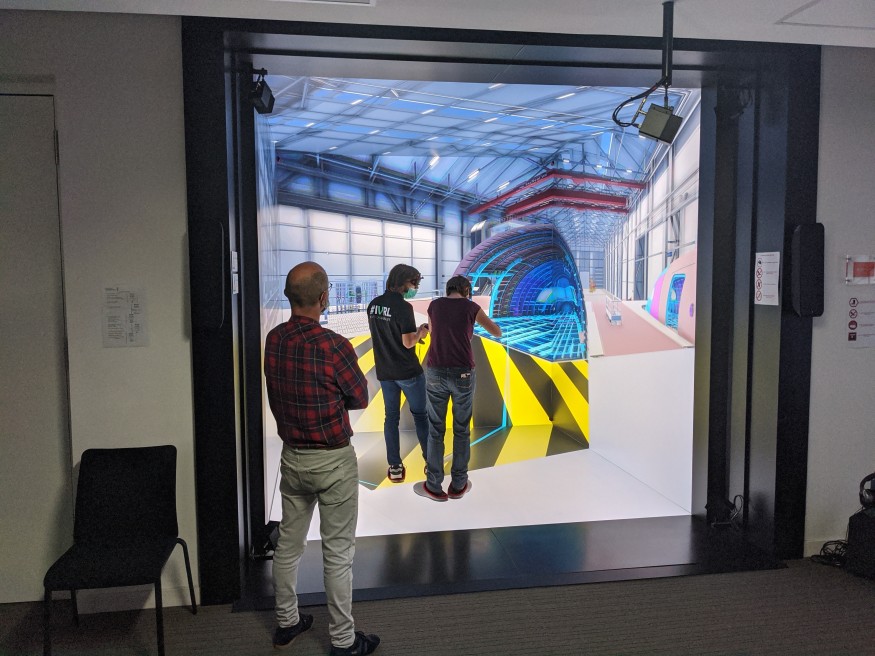
Does the CAVE automatic virtual environment have limits ?
There can be many obstacles to the adoption of the VR CAVE, starting with the cost of installation. This type of immersive 3D installation costs around €80,000 for a 2 sided corner cave up to €750,000 for a 6 sided CAVE, plus the maintenance and usage costs that can amount to more than €3,000 per month.
The space required is also a strong consideration to the installation of a CAVE virtual environment. It is imperative to have a relatively spacious room to accommodate all the required hardware (the TORE project illustrates this well), and the necessary space for the installation of projectors (which is less in the case for LED screens or when using mirrors), plus items such as the air conditioning system, lighting, control desk, etc.
The installation of a virtual reality CAVE also has a number of factors to consider to ensure optimum performance, for example, a strong vibration close to the cave automatic virtual environment can shift the projectors and force a resynchronization or an external light source can interfere with the tracking.
A system that can be adapted to your needs thanks to Unreal Engine 5
The latest technological advances in UE5, notably nDisplay technology, make it possible to design and adapt all CAVE systems, whatever the number of screens, from a Powerwall (single stereoscopic display) to a simultaneous connection of several CAVE virtual environement.
SkyReal 1.17, running with latest Unreal Engine 5.2 is now available and fully operational, delivering unprecedented rendering and display performance and pushing back the technical limits of virtual reality.
Members of SkyReal team testing the stereoscopic Powerwall in SkyReal Headquarters, powered by Unreal Engine 5.2
An immersive 3D technology often used in the context of project reviews
Ariane Group uses their VR CAVE to show decision-makers the work carried out by several people on a project. This allows them to bring together different stakeholders in a common space in order to carry out virtual reality project reviews. This use also exists using connected HMDs, but using the CAVE virtual reality system, bringing together a group of individuals in front of a common screen, offers the possibility to have the main users interact with the spectators without them needing to master the virtual reality software.
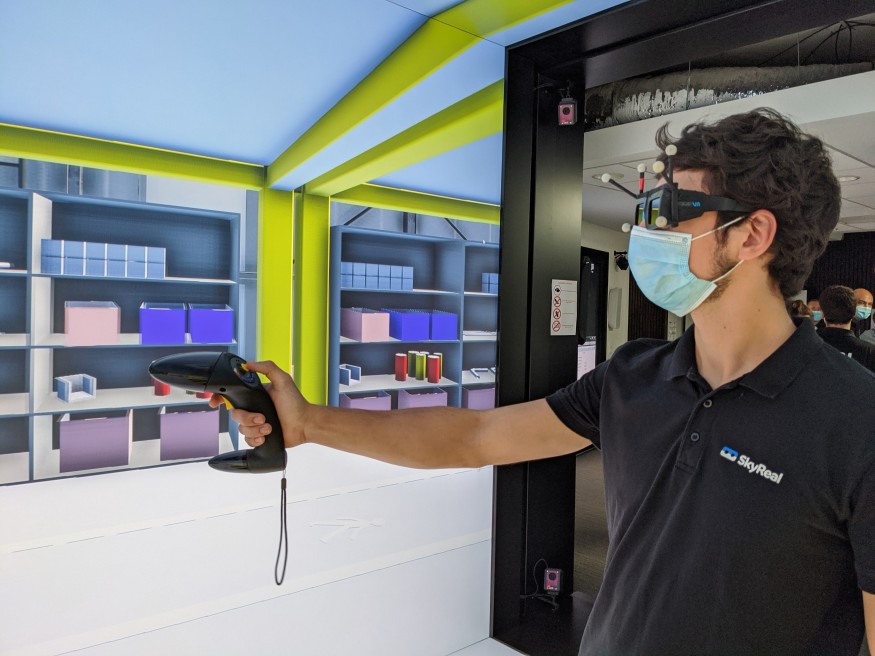
We have been using virtual reality with our CAVE equipment since 2015 and SkyReal since 2019, so the support of a CAVE environment is ideal as it is particularly suited to the problems of our workshop operators for the validation of our flight products (rocket) and our ground products (building, machine, tools). CAVE technology has many advantages; it allows the field user to be perfectly immersed in a 3D space without losing his bearings and without restriction in the field of vision. It thus gives an unprecedented vision of the project under development. It also helps to better understand the expectations of each user since it creates an environment conducive to interactions and promotes discussion between the different users on potential issues.
